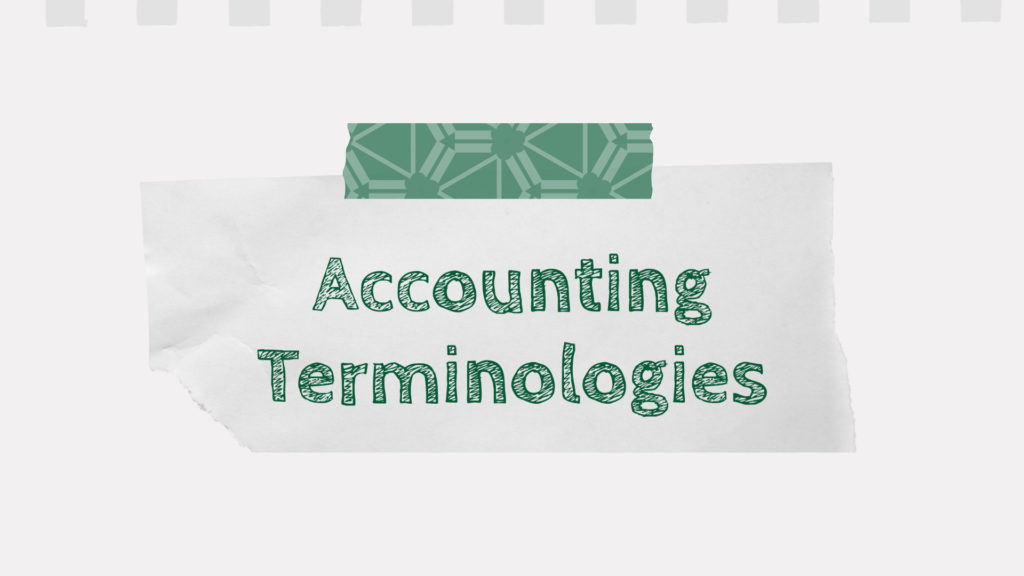Are you looking for basic accounting terminologies? Do you not understand basic terms used in Accounting? If so, you are in the right place.
In this article, I will share with you a few basic Accounting terminologies. After reading this article, you will have solved your query of “Basic Accounting Terminologies.”
Introduction
When you study Accountancy, you come across various words and accounting terminologies that can sometimes seem complicated. On googling their meaning, you may or may not understand their meaning. Here’s a list of basic accounting terminologies with a brief description:
1. Business
Business is a human economic activity that includes the exchange of goods and services with the objective of earning profit. If an activity is done without the objective to earn a profit, it is not considered a business activity.
2. Financial Transaction
Financial Transactions are those transactions that have both giving and receiving aspects that can be measured and expressed in terms of money or monetary value.
If cash or cheque is received or is receivable, it is considered a financial transaction and is recorded in the books of account. On the other hand, if someone appreciates or says bad about the business, it is not considered a financial transaction and is not recorded since it can’t be expressed in terms of monetary value.
3. Bank Statement/Pass Book
A Bank statement is the book of the bank in which it mentions the withdrawal (debit) and deposit (credit) records of the individual account holders. It is also called a passbook.
4. Assets
Assets are resources that have monetary value and are owned or controlled by individuals or organizations with the expectation of future benefit. They are reported on a company’s balance sheet. Its types are fixed assets, current assets, and liquid assets.
a) Fixed assets
Fixed assets are the assets that are purchased for a long time and provide regular income to the owner. Its types are tangible (that can be seen and touched) and intangible (that can not be seen or touched but only felt). For example furniture, machinery, land, building, goodwill, reputation, etc.
b) Current Assets
Current assets are the assets that can be converted into cash within a year. For example bank balance, cash, stock/inventory, marketable security (share), etc.
c) Liquid Assets
Liquid assets are those assets that can be converted into cash immediately. For example cash.
5. Liabilities
Liabilities are the amount payable by an organization to others. Examples: loan payable, capital, salary payable, reserve for ___, rent payable, tax, etc.
They are the obligations/responsibilities to be paid by a firm. The types of liabilities are current liabilities and long-term liabilities.
a) Current Liabilities
Current liabilities, also known as short-term liabilities, are the amount to be paid by our organization to other organizations within a year. Example: Mortgage, rent, etc.
b) Long-Term Liabilities
Long-term liabilities are the amount/liability which is to be cleared or paid within or after a year. Example: Bank loan, etc.
6. Expenses
Expense is any amount paid for the day-to-day business operation, production process, and sales of goods or services in a regular manner or every year.
7. Income
Income is any amount received from the day-to-day business operation and sales of goods or services in a regular manner or every year.
8. Capital
Capital is the amount of property invested in the business and its operation by the owner. It is a liability since it’s not earned by the business and is payable to the owner or investor.
9. Debtor
Debtors are the business parties from whom our business has to receive cash on account of credit sales. For example, if we sell a vehicle on credit, the buyer becomes our debtor as we have to receive money from them.
10. Creditor
Creditors are the business parties to whom the business has to pay cash on account of credit purchases. For example, if we buy a vehicle on credit, the seller/supplier becomes our creditor as we have to pay money to them.
11. Revenue
Revenue is the amount received or receivable by the business on account of sales of goods or rendering services. Revenue is not the same as profit. Revenue is the total income generated whereas profit is the total income amount remaining after accounting for all expenses, debts, etc.
12. Accounting Equation
The accounting equation is the mathematical model that shows the relationship among the accounting variables like assets, capital, and liabilities.
Mathematically,
Assets = Capital + Liabilities
13. Retained earning
Retained earnings is the amount of profit remaining after distributing dividends (profit) to the shareholders/owners.
14. Drawing
Drawing is the amount, property, or goods withdrawn by the owner for personal or domestic use in sole trading or partnership business.
15. Bank Overdraft
A Bank overdraft, also known as an overdraft, is the excess amount withdrawn from the bank than the deposited amount. This facility is given by the bank only to trustworthy customers.
16. Debit and Credit
Debit is the benefit taking and credit is the benefit sacrificing. These are the two sides of accounting using which all financial transactions are recorded.
17. Journal
Journal is the first record of transactions that are made immediately when the transaction takes place in chronological order. It is also known as a ‘daily book’ or ‘original entry.’ Its process is called ‘entry’.
18. Ledger or T-account
Ledger is the second entry of recording transactions that are made from the journal. Its process is called ‘Posting’.
19. Trial Balance
A trial Balance is a statement/list of ledgers prepared to find out the errors and frauds and to check the arithmetical accuracy in the books of account. If the Dr. and the Cr. sides are equal, it’s accurate.
20. Entry
Entry is the record of transactions in the journal.
21. Journalizing
Journalizing is an act of preparing the journal by showing dual effects.
22. Posting
Posting is an act of recording transactions in a ledger from the journal.
23. Cash Purchase
A cash purchase is the purchase of goods or services by paying via cheque or cash.
24. Cash Sale
A cash sale is the sale of goods or services by receiving cheques or cash.
25. Credit Purchase
Credit purchase is the purchase of goods or services without paying via cheque or cash.
26. Credit Sale
A credit sale is the sale of goods or services without receiving a cheque or cash.
27. Income Statement
An income statement is a statement prepared to determine the net income/loss by deducting total expenses from total revenue.
28. Balance Sheet/Statement of Final Position
A balance sheet or statement of final position is a statement prepared to determine strengths and weaknesses and the financial position of the business. It is the final step of the final account after the Trading and Profit & Loss account.
29. Book Keeping
Bookkeeping is an act of making routine records of day-to-day transactions of a business in a prescribed form and according to a set of rules.
30. Accounting
Accounting is broader than bookkeeping. It records, classifies, and summarizes the transactions of a business with a view to ascertaining its financial position at the end of the period.
It is also called the “Language of Business.”


I appreciate, cause I found exactly what I was looking for. You have ended my four day long hunt! God Bless you man. Have a great day. Bye
Outstanding post, I believe blog owners should larn a lot from this website its rattling user genial.
Hi , I do believe this is an excellent blog. I stumbled upon it on Yahoo , i will come back once again. Money and freedom is the best way to change, may you be rich and help other people.
Very interesting subject, regards for posting.
I am so grateful for your post.Thanks Again. Keep writing.
I conceive this website contains some very fantastic info for everyone. “The human spirit needs to accomplish, to achieve, to triumph to be happy.” by Ben Stein.
What i don’t understood is in fact how you’re not really a lot more well-preferred than you might be right now. You’re very intelligent. You already know therefore significantly relating to this matter, produced me for my part believe it from so many varied angles. Its like women and men are not interested unless it is something to do with Lady gaga! Your own stuffs excellent. Always maintain it up!
Will do! Thank you for the support!